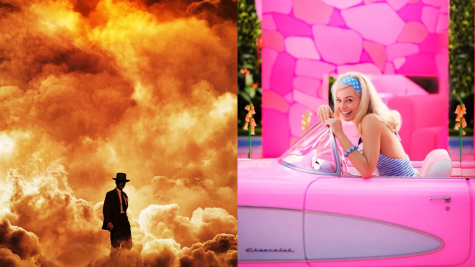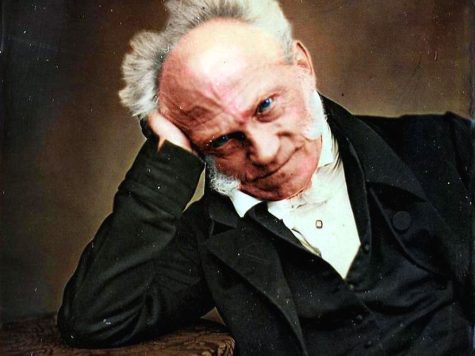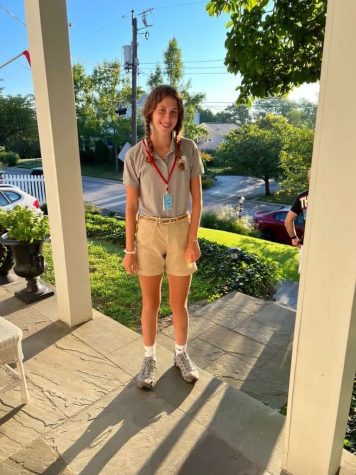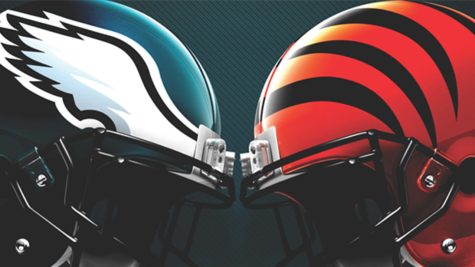Indian-American Students in America: A Personal History
May 3, 2019
These words were originally presented before the Warren County Educational Service Center on February 25th, 2019. Part of the speech can be found at https://www.youtube.com/watch?v=41i4PY2_ufE&t=645s).
Thank you, Dr. Sehi, Pam, and the entire Warren County Educational Service Center for this opportunity to speak before you today. It truly is a privilege. To give you all an outline of my talk, I will begin with a broad overview of Indian-American students then discuss my personal experiences. Please feel free to stop me at any time with questions. I know you are teachers, and like hand-raising, but don’t hesitate to interrupt me. My name is Manav Midha, and I am a senior at Cincinnati Country Day School. Before attending Country Day, I went to Mason Public Schools, and transferred after 7th grade. This fall, I will be attending Case Western Reserve University studying Cognitive Science and Economics, and I ultimately plan on earning my MD and JD and becoming a bioethicist.
Before we begin, it is important to understand that Indian-American students, like all minority groups, are not a homogeneous group; we enjoy different interests and experiences, and as we just discussed, come from many distinct cultural backgrounds. What we share, however, are the values our parents instill in us from a young age—values such as respect for parents, teachers, and elders, and prioritization of pragmatic education.
These values are not exclusive to Indian-American students though. It is not unreasonable to figure that all parents want their children to succeed and become decent, respectful citizens of society. So the question we must ask ourselves is, “What makes Indian-American students unique? Why do Indian-Americans consistently perform well in school and become high achievers?”
There are several answers to these questions, most that should be answered by historians and experts, but they can generally be answered by looking at American immigration policy over the past half-century. The socialist policies of Indira Gandhi and the Indian National Congress in the 60s and 70s led to a large exodus of Indian intellectuals abroad, mostly to the United States. The children and grandchildren of these immigrants were raised in an environment in which their parents valued education as a means of social improvement, and resultantly, they performed well in school. Economic studies clearly show that the kids of educated people tend to do better academically themselves, and thus, these results make sense.
While we as Indian-Americans would like to believe that there is something fundamentally different in our parenting and values that leads to success, history repeatedly reminds us that while our values are generally good, we are lucky to be products of economically successful people themselves. We are lucky that America accepted our parents and grandparents. Immigrants want to serve America.
While we as a society often like to believe that the times of discrimination and differential treatment have passed, they have not. As a student at both Mason and Country Day, I have at times felt different than my White peers. Especially when I was younger, I sometimes didn’t understand cultural references to older movies, TV shows, and songs. When asked my favorite of the aforesaid, I didn’t know what to say. Sometimes, Christian references alluded me. On Grandparents’ Day, I didn’t know what to do—mine were thousands of miles away in India. Sometimes, I felt that I wasn’t being included, that something was wrong with me. I wanted to hide my culture, hide my feeling, hide who I was, in favor of assimilation. I do not blame my peers or my teachers for these emotions, because how could I expect them to know how I felt when I didn’t express myself? I hope that through discussions like this one and tough conversations with each other, we can come closer to sharing our feelings with each other and strengthening our society at the individual, person-to-person level. George Washington wrote in his “Rules of Civility and Decent Behavior in Company and Conversation” that a good person must “Labor to keep alive in his heart that little celestial fire called conscience.” This event is a glowing branch aflame in the fire of society.
In the fourth grade, it was Veterans Day, and we students had to stand along the halls of Mason Intermediate School while we waited for the parade of veterans to pass. Our teachers had given us all small American flags to waive as the tour passed, and we had to stand quietly. I was looking around, waiting for the regal sounds of the band so I could begin waiving the flag, when I heard a sharp “Man-aav” (that is not how my name is pronounced). It turns out that I had been holding the flag upside-down, and that had upset my Language Arts teacher, whom I will not name. I was then made to sit quietly in the classroom while the rest of the class enjoyed the parade and seemed to laugh at me. My parents also received an angry phone call. Of course, I should not have been holding the flag in this manner, but no one had told me proper flag etiquette before! My teacher had expected me to know, as my classmates did. As educators, I implore you all to make explicit your reasoning for decisions like these, and not to expect students from different cultural backgrounds to automatically know American values, even if they were born here.
While I can discuss many more examples like the one I just explained, I’d like to now share some advice that you all as teachers can implement in the classroom. Advice that will not only improve the experiences of Indian-American students, but all students.
First, please try your best to pronounce correctly the names of your students. I get it, some Indian names are so long that even I can’t pronounce them! In these cases, perhaps you can ask the student at the beginning of the year how they would like it to be said, or if they have a nickname that they prefer.
Second, please understand that Indian-American students, like most racial minorities, do not enjoy feeling categorized into groups based on their races. Keep this in mind when making groups. For Hindu Indian-American students in particular though, we enjoy many different interpretations of our religion and sometimes feel awkward when generalities are made. As a side note, I personally do not believe that Hinduism and other religions are inconsistent, but that is another talk.
Third, please explain your reasoning for certain decisions, and do not expect all of your students to understand cultural references. As I stated earlier, even if Indian-American students were born in the United States, they may not be exposed to that much American culture in their homes and resultantly may not possess that knowledge.
Fourth, please do not assume that if because Indian-American students tend to perform well academically, they are immune from mental health issues and corresponding substance abuse issues. This is probably my most major piece of advice. Just yesterday, I was driving back to Cincinnati from a weekend trip with two friends, a gay quarter-Hispanic boy and a white girl. We shared with each other in almost cathartic experience our emotions and outlook on the world. After the talk, we all felt better! We all felt that despite our outward differences and the distinct ways we are perceived on appearance by the world, we are not alone. I urge you all to incorporate in your class conversations like these, that allow your students to learn from each other’s experiences and feelings to grow closer, to “keep alive that little celestial fire called conscience.”
Fifth, ask questions! If you are unsure of a cultural element, or simply want to learn more, do not hesitate to ask Indian-American students. We love to share. In fact, some of my favorite teachers have been those who have shown the vulnerability needed to ask me questions.
Just by attending this talk, you have shown your appreciation for our Indian-American culture and your love of education and professional development. I, and by proxy all students, thank you. To be a teacher is one of the most important professions needed for the maintenance of democracy and our American way of life. We are profusely lucky that you have dedicated yourselves to this noble career. Thank you.
Now who has questions?











